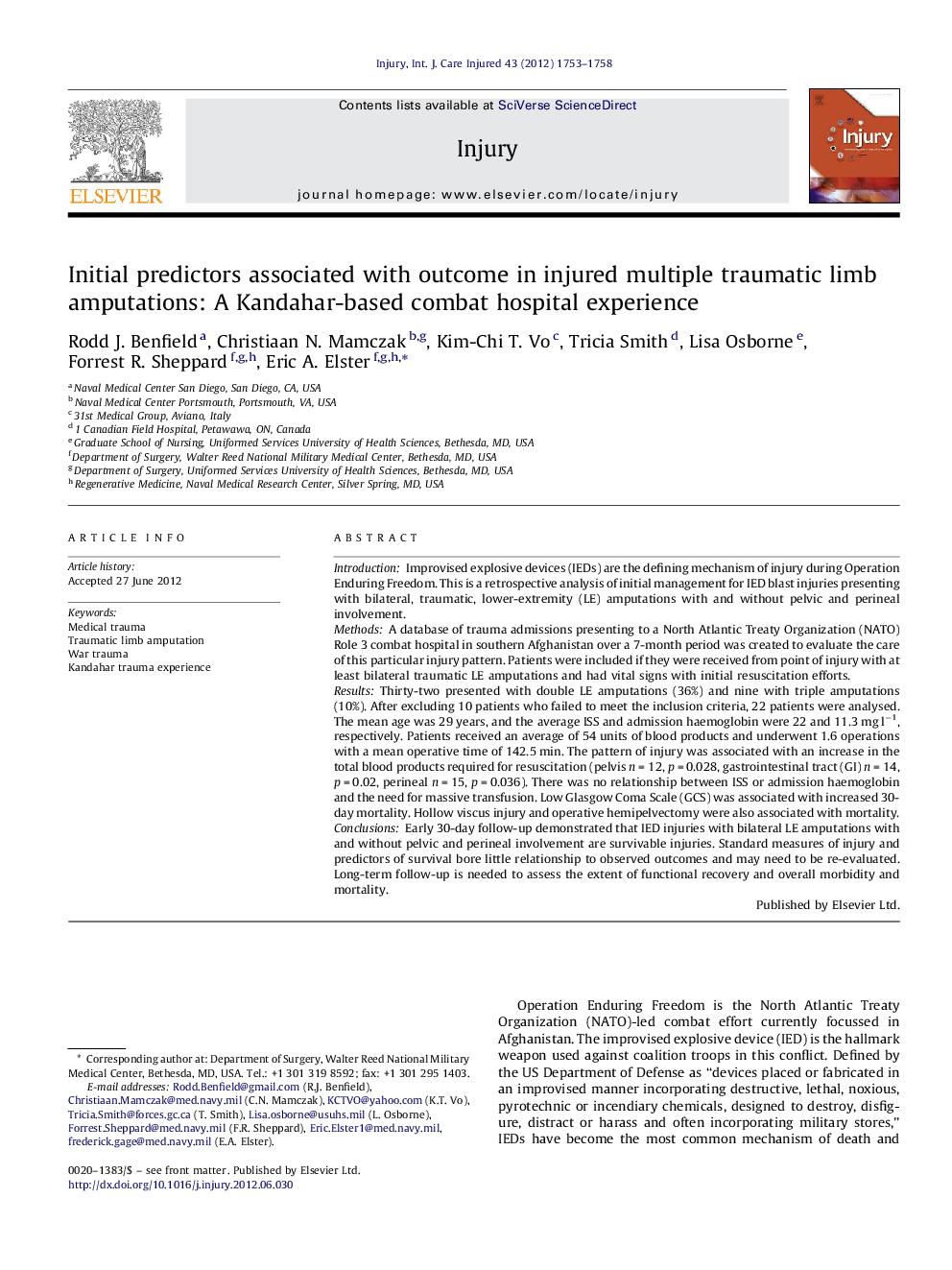| کد مقاله | کد نشریه | سال انتشار | مقاله انگلیسی | نسخه تمام متن |
|---|---|---|---|---|
| 3240328 | 1206039 | 2012 | 6 صفحه PDF | دانلود رایگان |

IntroductionImprovised explosive devices (IEDs) are the defining mechanism of injury during Operation Enduring Freedom. This is a retrospective analysis of initial management for IED blast injuries presenting with bilateral, traumatic, lower-extremity (LE) amputations with and without pelvic and perineal involvement.MethodsA database of trauma admissions presenting to a North Atlantic Treaty Organization (NATO) Role 3 combat hospital in southern Afghanistan over a 7-month period was created to evaluate the care of this particular injury pattern. Patients were included if they were received from point of injury with at least bilateral traumatic LE amputations and had vital signs with initial resuscitation efforts.ResultsThirty-two presented with double LE amputations (36%) and nine with triple amputations (10%). After excluding 10 patients who failed to meet the inclusion criteria, 22 patients were analysed. The mean age was 29 years, and the average ISS and admission haemoglobin were 22 and 11.3 mg l−1, respectively. Patients received an average of 54 units of blood products and underwent 1.6 operations with a mean operative time of 142.5 min. The pattern of injury was associated with an increase in the total blood products required for resuscitation (pelvis n = 12, p = 0.028, gastrointestinal tract (GI) n = 14, p = 0.02, perineal n = 15, p = 0.036). There was no relationship between ISS or admission haemoglobin and the need for massive transfusion. Low Glasgow Coma Scale (GCS) was associated with increased 30-day mortality. Hollow viscus injury and operative hemipelvectomy were also associated with mortality.ConclusionsEarly 30-day follow-up demonstrated that IED injuries with bilateral LE amputations with and without pelvic and perineal involvement are survivable injuries. Standard measures of injury and predictors of survival bore little relationship to observed outcomes and may need to be re-evaluated. Long-term follow-up is needed to assess the extent of functional recovery and overall morbidity and mortality.
Journal: Injury - Volume 43, Issue 10, October 2012, Pages 1753–1758